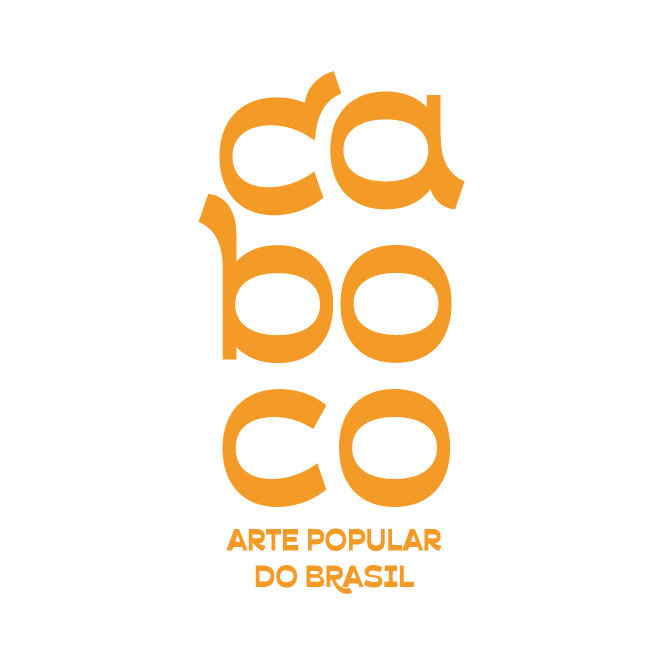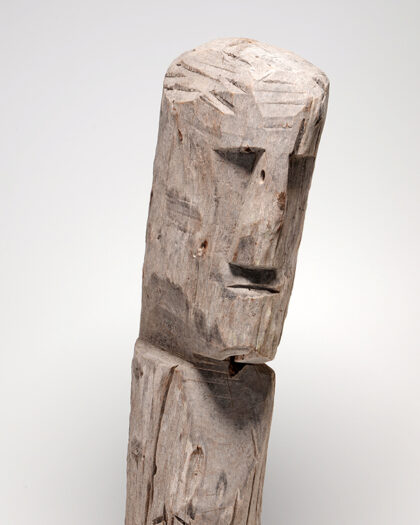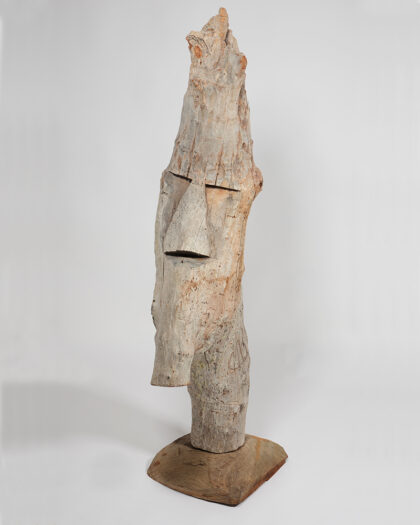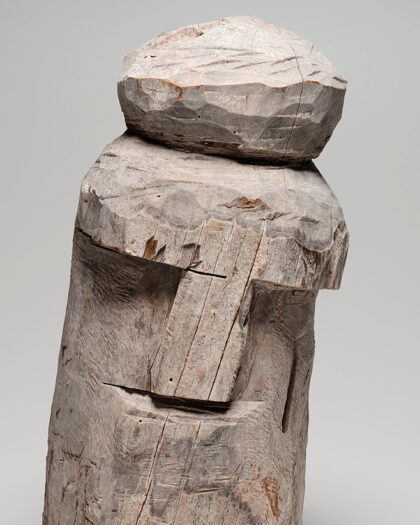José Bezerra was born in 1952 in Buíque, Pernambuco, where Sertão meets a harsh climate and landscape. José has once been a farmer, a jockey of improvised competitions, manual worker, driver and many other activities forced by poverty. He killed animals to eat, chopped trees to make firewood, things that make him unhappy and that he tries to compensate through art.
At about ten years ago, José had a dream in which he was called to realise the work he does now. He should become an artist. From that moment on he started looking at wood around him and intervein on them. José does not sculpt in a traditional way, acting on the wood block to find a defined form. He tries to see a figure that is already present in the wood – normally umburana, the trunk, branches and roots – and bring it to life with the intervention of a machete, rasp, chisel and a saw.
To him, it is about reaching a figure and simultaneously keep alive the connection with the raw wood from which he started and the instruments and gestures applied to it. This decision grants his sculptures an uncommon intensity. José normally works with twisted logs, typical of the region, as the umburana. The irregular definition of the figures mixed with the tortuosity of wood, and their relationship, make one notice forms that seem to fight to surface, in a clash between the vegetal and the human sculpture intervention. This gives his work an unique expressivity. His animals, bodies and faces doe not have the sweetness that most of folk popular art has, done with the affection and familiarity with the materials.
When he speaks about his art, the artist highlights the role of imagination. The importance he attributes to the act of seen images in trunks and branches that he finds around his farm finds in his imagination an element that pushes the pieces away from mere realism. To José Bezerra, to see means to open the raw material, the wood, to possibilities that push them away from a lazy identity in within themselves, as well as pushes them away from the mere instrumental use.
The nature that comes out of his pieces has an intense life, an inexhaustible and tormented energy. It resembles the descriptions made by Euclides da Cunha on the region of Canudos in the first part of the book “Os sertões”: “(…) trees without leaves, twisted and dry branches, rough, intercrossing, surfacing in the space or stretching in the soil, resembling an immense arm movement of torture of the agonizing flora …”.
But his work’s expressivity comes from the comprehension that the own place that contributed so decisively to his work – the region from Vale do Catimbau and the rural activities there – are about to be put down by the accelerated economic changes in the country. In addition, the sculptor seems to perceive the extension of the tragedy rounding our planet, the treats that nature is facing in a global scale. As every great artist, José Bezerra sees far away and close by.



